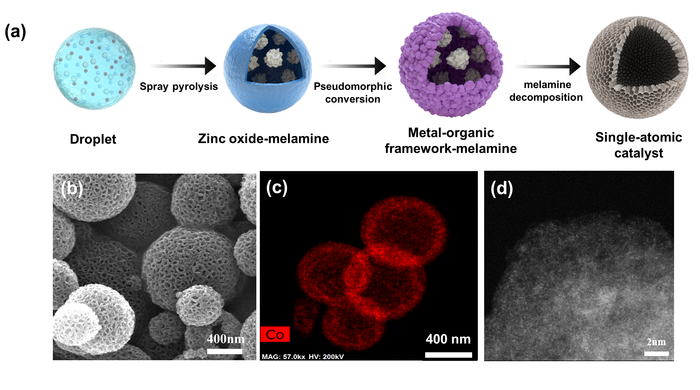From pv magazine Global | via the Hydrogen Stream
The Korea Institute of Science and Technology (KIST) has developed a single atomic cobalt-based catalyst with approximately 40% improved performance and stability compared to contemporary cobalt nanoparticle catalysts. “Previously reported single-atomic catalysts can only be produced in small quantities because the chemical substances and synthesis methods used varied depending on the type of the synthesised catalyst,” KIST said.
The European Commission said it will roll out carbon contracts for difference to support the uptake of green hydrogen by industry. It will also offer specific financing for REPowerEU under the Innovation Fund, along with two delegated acts on the definition and production of renewable hydrogen. The commission’s president, Ursula von der Leyen, said that the European executive body is assessing state aid for hydrogen projects as a priority, while also working on EU financing schemes.
BP and German chemical producer Linde have announced plans to advance a major carbon capture and storage (CCS) project in Texas to enable “low-carbon hydrogen” production at Linde’s existing facilities. “Upon completion, the project will capture and store CO2 from Linde’s hydrogen production facilities in the greater Houston area – and potentially from its other Texas facilities – to produce low carbon hydrogen for the region,” said BP. “The low-carbon hydrogen will be sold to customers along Linde’s hydrogen pipeline network under long-term contracts to enable production of low-carbon chemicals and fuels.”
The Africa Green Hydrogen Alliance has kicked off in Kenya, South Africa, Namibia, Egypt, Morocco, and Mauritania. It aims to make the continent a frontrunner in the development of green hydrogen. The countries “intend to foster collaboration on creating a sustainable enabling environment to supercharge green hydrogen development,” according to a press release.
Copenhagen Infrastructure Partners has proposed the construction of an artificial island dedicated to the large-scale production of green hydrogen from offshore wind in the Danish part of the North Sea. “The island is expected to be able to supply an unprecedented amount of green hydrogen by 2030 and will thus be a crucial step in securing Europe’s future green energy supply,” said the Danish fund manager.
The Danish Energy Agency said that it will set up a new secretariat this summer to assist the authorities and project developers in creating an overview of regulatory treatment and approval processes, while monitoring the development of Power-to-X products in Denmark.
The UK government has announced up to GBP 60 million ($74.9 million) of government funds to develop hydrogen. The funding has been awarded to 28 projects across the United Kingdom. ITM Power is set to receive more than GBP 9.2 million to build a next-generation 5 MW electrolyser stack.
The Massachusetts Institute of Technology and the Technical University of Munich have designed a new kind of glucose fuel cell that converts glucose directly into electricity. “The device is smaller than other proposed glucose fuel cells, measuring just 400 nanometers thick,” said MIT. The fuel cell could be incorporated into a medical implant.
Hydroplane will showcase its work on modular hydrogen fuel cell power plants for aviation and mobile energy storage at the 2022 European Business Aviation Convention and Exhibition (EBACE2022) from May 23 to May 25.
This content is protected by copyright and may not be reused. If you want to cooperate with us and would like to reuse some of our content, please contact: editors@pv-magazine.com.








By submitting this form you agree to pv magazine using your data for the purposes of publishing your comment.
Your personal data will only be disclosed or otherwise transmitted to third parties for the purposes of spam filtering or if this is necessary for technical maintenance of the website. Any other transfer to third parties will not take place unless this is justified on the basis of applicable data protection regulations or if pv magazine is legally obliged to do so.
You may revoke this consent at any time with effect for the future, in which case your personal data will be deleted immediately. Otherwise, your data will be deleted if pv magazine has processed your request or the purpose of data storage is fulfilled.
Further information on data privacy can be found in our Data Protection Policy.